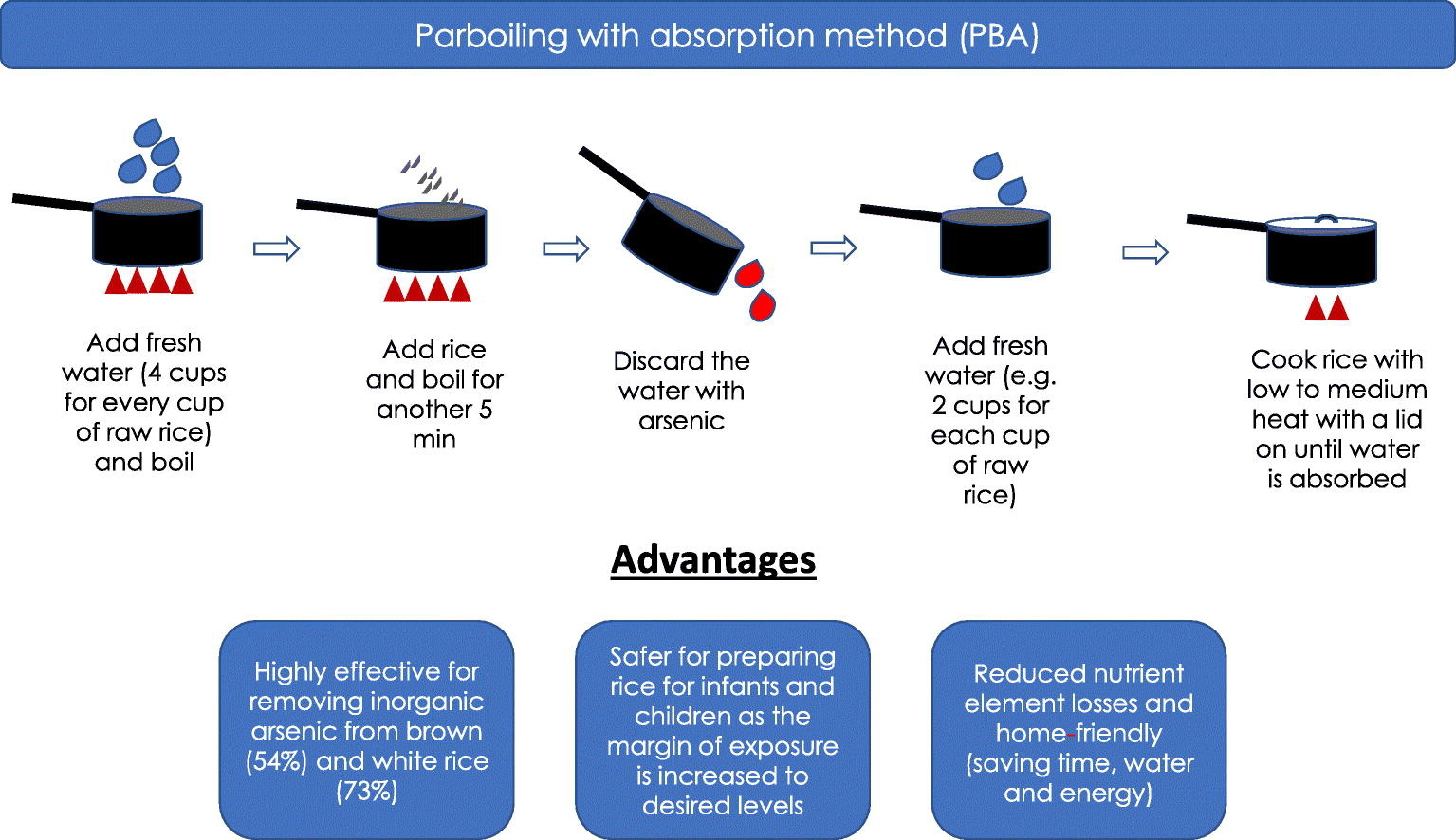Why you should know:
Arsenic is a carcinogen and has various other negative health effects; enough to warrant exposure limits in various jurisdictions. A five minute boil-and-discard step before cooking is a simple way to reduce your exposure, especially if you eat a lot of rice.
Details are in the study, linked in the title of this post. Here’s a diagram from the abstract:

The microplastics in my body laugh at arsenic’s petty attempt on my life!

Wow, lot to unpack here.
-
“Ain’t nobody got time for that.”
-
How much arsenic are we talking about here?
-
“Saving time, water, and energy” is apparently short for boil water, stand around, drain, re-boil more water using more energy, and finish cooking rice. Where is all this time saving happening?
-
“The margin of exposure [to arsenic] is increased to desired levels”. Hmmm I guess if you really think about it that is a true statement, but one heck of a roundabout way to say it.
- This seems to mainly be a concern in places where a lot of rice is consumed and there is no legal limit for arsenic in rice (many parts of Asia), not necessarily in the US where there is an FDA limit and most people don’t eat rice every day.
- It saves time, water, and energy compared to other ways of reducing arsenic, like using the excess water method with large excesses of water. Parboiling in with 4 times the water by weight and then cooking in 2 times the water by weight uses less water than cooking once in 10-12 times the water by weight (half the water). Heating half as much water to boiling reduces energy use and time (assuming constant heating power in W from the stove). Of course it’s still slower than cooking rice using the absorption method common in many places (this is not necessarily how people in some countries cook rice).
The article explains the infographic and adds a lot more context.
The amount of arsenic depends on location - if you’re in a region that has standards on arsenic levels, like the EU, UK, or the US, then you’re probably fine, but the levels may be higher than what’s considered safe for children. This method would allow you to reduce the levels by around 50%, and since the levels for children are a bit under half of what’s acceptable for adults, that’s likely to make it safe for them.
The time savings are relative to other methods for reducing arsenic content, like cooking it with excess water (like a 12:1 ratio) and then discarding the excess, as this method allows you to use a rice cooker for the remaining time and to cook with a much smaller water:rice ratio, even accounting for the discarded water.
-
Oh boy, someone better go back and tell all of Asia for the last 10,000 years
This is a growing problem due to climate change (higher temperatures seem to increase arsenic uptake) and pollutants, so this doesn’t make any sense.
Ysk your body can naturally get rid of arsenic so this is pointless.
Let’s do the math. Rice contains about 0.4 mg/kg As by weight. The “bad” rice in Louisiana or whatever contains about 75% more - about 0.7 mg/kg. Let’s round up to 1 mg/kg to make the math easy. Chronic exposure limits for a 50 kg adult are about 5 mg/day (on the low end).
So you’d have to choke down a full 10 lb bag of rice every day (about 110 cups of cooked rice) to start to tip the scales. Other sources of arsenic, like groundwater, are likely far more significant.
Comment stolen from reddit
Do you “discard” the water by… just letting it into the sink? How long before aresnic is everywhere?
Arsenic is a naturally occurring element.



